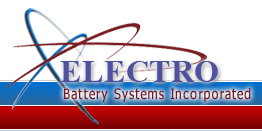SAFT Renewable energy systems
Renewable energy systems will form an increasingly important part of the electricity networks of the future. Battery energy storage installations will therefore play a growing role in stand-alone, hybrid power and grid-connected installations.
Stand-alone
Stand-alone applications include:
- off-grid photovoltaic (PV) systems
- wind turbines.
Large batteries are needed to provide energy storage (Wh) for long discharge periods of hours or days.
Hybrid power
Hybrid power applications include:
- wind-hybrid systems
- PV-generator systems.
Batteries with comparably less capacity, optimised for short but frequent discharges are used for:
- peak power demands
- bridging to diesel generator or fuel cell operation in the event of extended periods without sun or wind.
Grid-connected
In grid-connected applications, the inherent variability especially of wind energy can destabilize weak grids. This is typically characterized by a lack of spinning reserve. In such high-voltage systems – ranging from hundreds of kW to several MW – batteries are used to:
- stabilize wind generation and brige to other forms of generation
- provide sufficient output stability and ramping control to make wind generation network-compatible.
- make PV energy dispatchable (separation of time of generation and time of use)
Reliable energy storage without maintenance
PV and wind-powered systems are often installed in remote areas. In many cases they are accessible only by boat or helicopter in good weather.
Their batteries must:
- require minimal maintenance
- withstand daily shallow cycles and seasonal deep cycles
- operate reliably in temperatures ranging from -30°C to +50°C.
|
